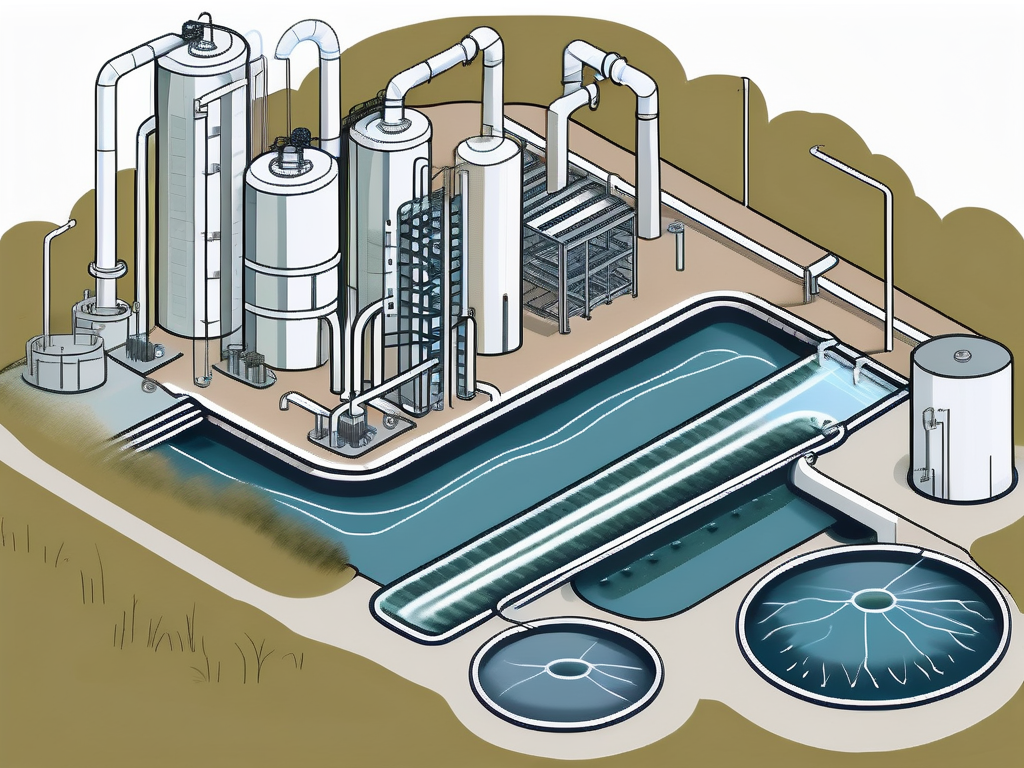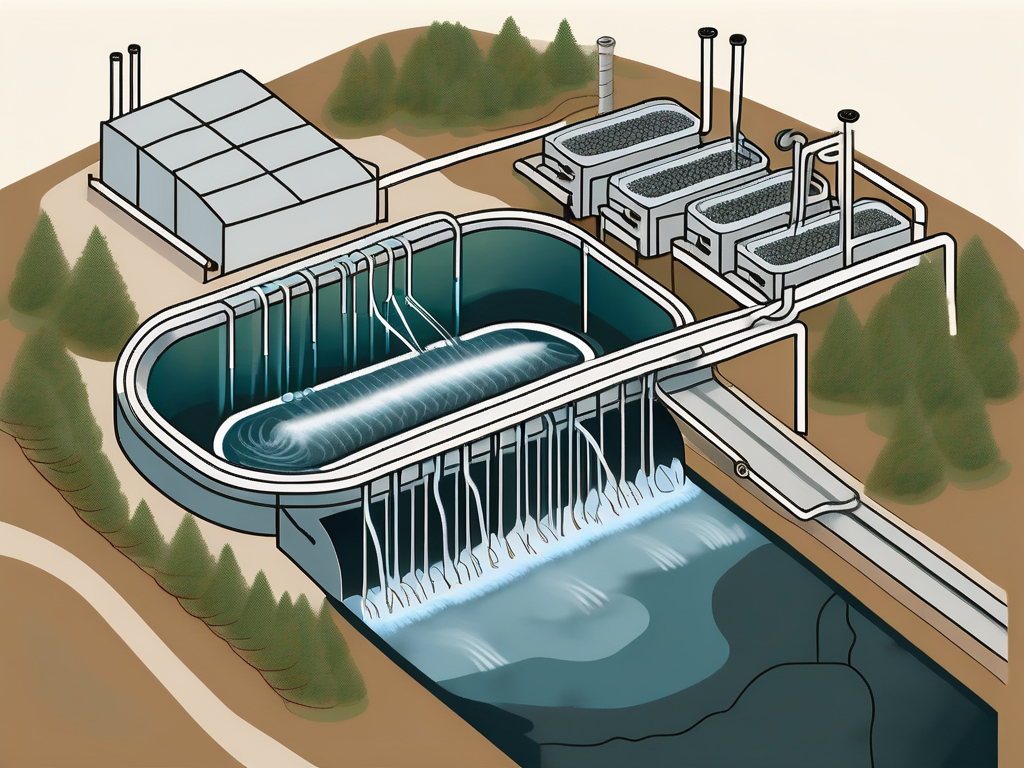
Influent Flow: Wastewater Treatment Explained
Wastewater treatment is a critical process in maintaining the health of both our environment and human populations. It involves the removal of contaminants from wastewater to produce an effluent that can be returned to the water cycle with minimal environmental impact. The influent flow is a key part of this process, referring to the incoming wastewater that enters a treatment plant. This article will delve deep into the intricacies of influent flow and its role in wastewater treatment.
Understanding the influent flow is crucial for the effective design and operation of a wastewater treatment plant. It directly impacts the efficiency of the treatment process and the quality of the treated effluent. This article will provide a comprehensive examination of influent flow, its characteristics, and how it is managed in a wastewater treatment plant.
Understanding Influent Flow
Influent flow refers to the incoming wastewater that enters a treatment plant. This wastewater can originate from various sources such as domestic households, industrial facilities, and stormwater runoff. The characteristics of the influent flow can greatly vary depending on these sources and the specific pollutants they introduce into the wastewater.
The volume, rate, and pollutant concentration of the influent flow are critical parameters that need to be monitored and controlled. These parameters directly influence the design and operation of the treatment processes and the overall performance of the wastewater treatment plant.
Volume and Rate of Influent Flow
The volume and rate of influent flow are determined by the size of the population served by the wastewater treatment plant and the amount of water used by this population. These parameters can vary throughout the day and across different seasons, with peaks typically observed in the morning and evening hours when water usage is highest.
Monitoring and controlling the volume and rate of influent flow is crucial for the efficient operation of a wastewater treatment plant. Excessive flow rates can overwhelm the treatment processes, leading to the discharge of untreated or partially treated wastewater. On the other hand, low flow rates can result in longer retention times and potential issues with sedimentation and odor.
Pollutant Concentration in Influent Flow
The concentration of pollutants in the influent flow is another critical parameter that needs to be monitored. This includes organic matter, nutrients like nitrogen and phosphorus, pathogens, and various types of chemicals. The concentration of these pollutants can vary depending on the sources of the wastewater and the specific activities that generate these pollutants.
High concentrations of pollutants can pose challenges to the treatment processes, requiring more energy and resources to achieve the desired level of treatment. On the other hand, low concentrations of pollutants can lead to inefficiencies in the treatment processes, as they are designed to operate within certain pollutant concentration ranges.
Managing Influent Flow
Managing the influent flow is a critical aspect of operating a wastewater treatment plant. This involves monitoring the volume, rate, and pollutant concentration of the influent flow and adjusting the operation of the treatment processes accordingly. Effective management of the influent flow can enhance the performance of the treatment plant and improve the quality of the treated effluent.

Various strategies can be employed to manage the influent flow. These include flow equalization, which aims to smooth out the variations in flow rate and pollutant concentration, and advanced process control, which uses real-time monitoring data to adjust the operation of the treatment processes.
Flow Equalization
Flow equalization is a common strategy used to manage the influent flow. It involves the use of storage tanks to temporarily hold the incoming wastewater, allowing the flow rate and pollutant concentration to be averaged out over time. This can help to reduce the impact of peak flows and pollutant loads on the treatment processes.
Flow equalization can enhance the performance of the treatment processes by providing a more consistent influent flow. It can also help to prevent the discharge of untreated or partially treated wastewater during periods of high flow rates.
Advanced Process Control
Advanced process control is another strategy used to manage the influent flow. It involves the use of real-time monitoring data to adjust the operation of the treatment processes. This can include adjusting the aeration rate in the biological treatment process based on the concentration of organic matter in the influent flow, or adjusting the chemical dosing rate in the chemical treatment process based on the concentration of specific pollutants.
Advanced process control can enhance the efficiency of the treatment processes and improve the quality of the treated effluent. It can also help to reduce the energy and resource consumption of the treatment plant, contributing to more sustainable wastewater treatment.
Impact of Influent Flow on Wastewater Treatment Processes
The influent flow has a direct impact on the various treatment processes in a wastewater treatment plant. The volume, rate, and pollutant concentration of the influent flow can influence the efficiency of these processes and the quality of the treated effluent.

Each treatment process is designed to operate within certain flow and pollutant concentration ranges. Variations in these parameters can affect the performance of the process and may require adjustments to the operation of the process.
Physical Treatment Processes
Physical treatment processes, such as screening and sedimentation, are typically the first steps in wastewater treatment. They aim to remove large solids and suspended particles from the wastewater. The efficiency of these processes can be affected by the volume and rate of the influent flow, with high flow rates potentially leading to the bypass of these processes.
The pollutant concentration in the influent flow can also impact the performance of the physical treatment processes. High concentrations of solids can overload these processes, while low concentrations can lead to inefficiencies.
Biological Treatment Processes
Biological treatment processes, such as activated sludge and trickling filters, aim to remove organic matter and nutrients from the wastewater. The efficiency of these processes can be affected by the rate and concentration of the influent flow. High flow rates can reduce the retention time in these processes, potentially leading to incomplete treatment.
The concentration of organic matter and nutrients in the influent flow can also impact the performance of the biological treatment processes. High concentrations can overload these processes, while low concentrations can lead to inefficiencies and potential issues with the microbial populations used in these processes.
Chemical Treatment Processes
Chemical treatment processes, such as coagulation and disinfection, aim to remove specific pollutants and pathogens from the wastewater. The efficiency of these processes can be affected by the volume and rate of the influent flow, with high flow rates potentially leading to incomplete treatment.
The concentration of specific pollutants and pathogens in the influent flow can also impact the performance of the chemical treatment processes. High concentrations can require higher doses of chemicals, while low concentrations can lead to inefficiencies and potential issues with the effectiveness of the treatment.
Monitoring and Control of Influent Flow
Monitoring and control of the influent flow is a critical aspect of operating a wastewater treatment plant. This involves the use of various instruments and control systems to measure the volume, rate, and pollutant concentration of the influent flow and adjust the operation of the treatment processes accordingly.
Effective monitoring and control of the influent flow can enhance the performance of the treatment plant and improve the quality of the treated effluent. It can also help to prevent the discharge of untreated or partially treated wastewater and contribute to more sustainable wastewater treatment.
Monitoring Instruments
Various instruments are used to monitor the influent flow. These include flow meters to measure the volume and rate of the influent flow, and water quality sensors to measure the concentration of specific pollutants. These instruments provide real-time data that can be used to adjust the operation of the treatment processes.
Regular calibration and maintenance of these instruments is crucial to ensure their accuracy and reliability. This can involve periodic checks and adjustments by trained personnel, as well as regular cleaning and replacement of parts as needed.
Control Systems
Control systems are used to adjust the operation of the treatment processes based on the data from the monitoring instruments. These systems can include manual controls, where operators adjust the process parameters based on their observations and experience, and automated controls, where computer algorithms adjust the process parameters based on the real-time data.
Effective control systems can enhance the efficiency of the treatment processes and improve the quality of the treated effluent. They can also help to reduce the energy and resource consumption of the treatment plant, contributing to more sustainable wastewater treatment.
Conclusion
Influent flow is a critical aspect of wastewater treatment, influencing the efficiency of the treatment processes and the quality of the treated effluent. Understanding and managing the influent flow is crucial for the effective design and operation of a wastewater treatment plant.
This article has provided a comprehensive examination of influent flow, its characteristics, and how it is managed in a wastewater treatment plant. It is hoped that this information will be useful for those involved in the design, operation, and management of wastewater treatment plants.



